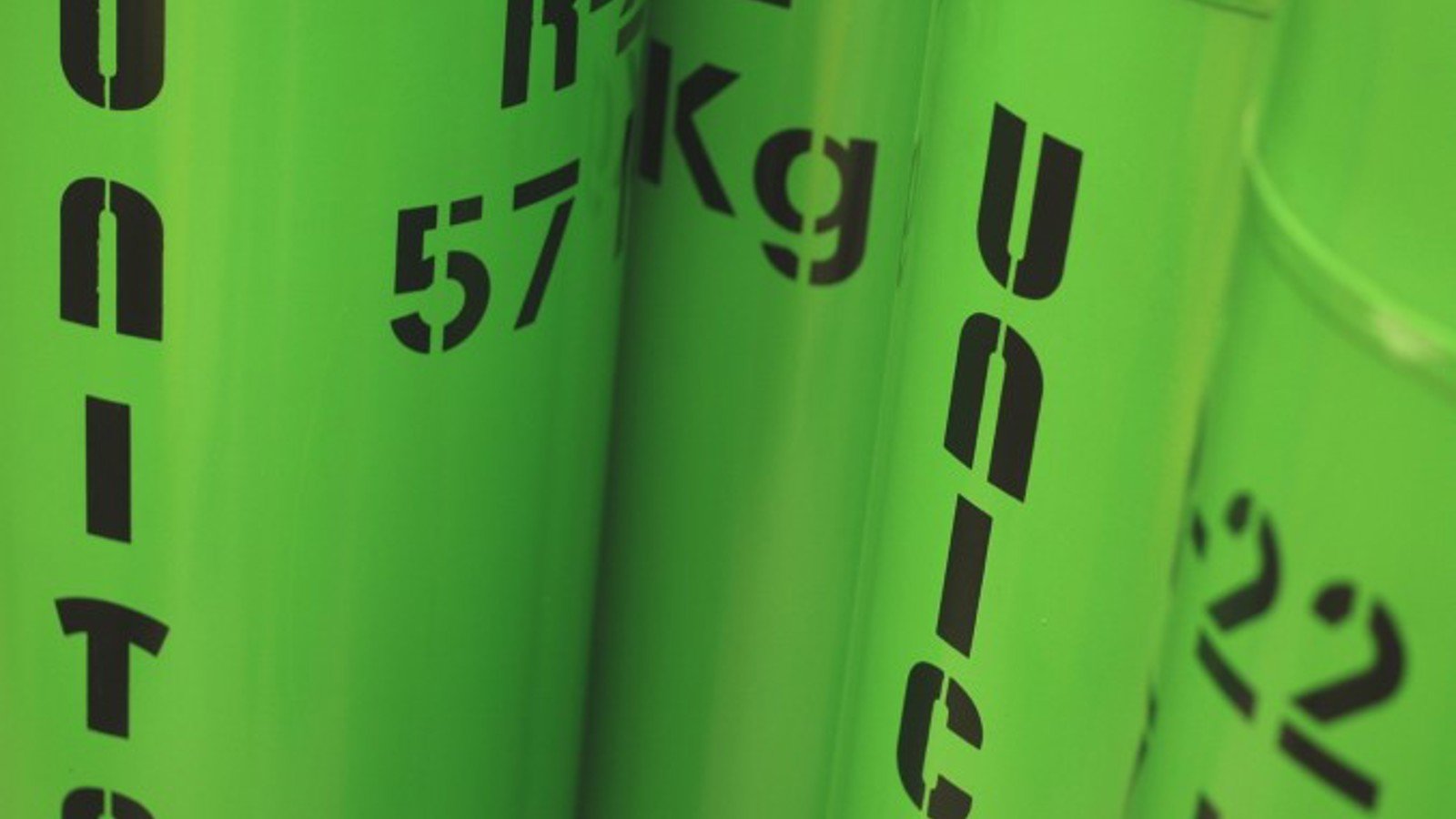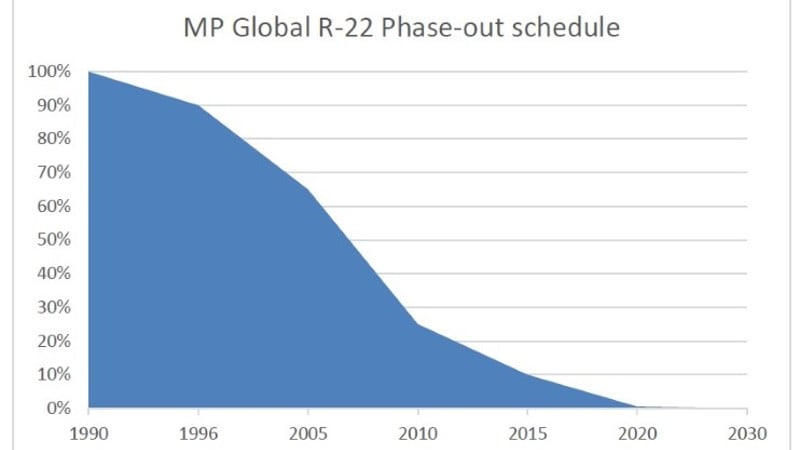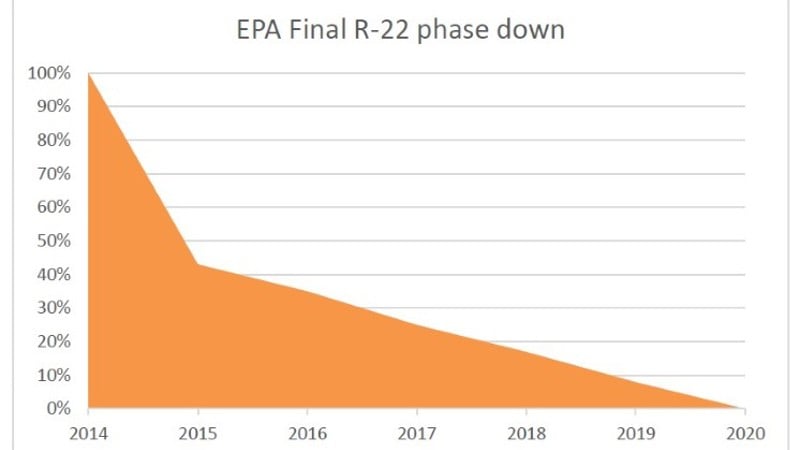R-22 – The Final Countdown

Wilhelmsen insights
|
There are approximately 6,000 – 8,000 ships globally, still operating with R-22, and many of these ships will need to find an alternative in the next few years if they are still using R-22. As after January the 1st, 2020 it will be next to impossible for any distributor to guarantee availability of legal R-22 anywhere.
The Montreal Protocol (MP) is an international agreement (treaty) to protect the ozone layer by reducing & controlling production, trade and the use of substances that deplete the ozone layer.
The MP was established in 1987 and was initially signed by 24 countries . It comes under the United Nations Environmental Program (UNEP) umbrella, and the MP has now been signed / ratified by 197 countries.Each Party (member / country) had to declare the amount of Ozone Depleting Substances (ODS) produced or imported in 1986. This formed the “base line” for each party, and the MP agreed on a step by step percentage reduction based on the 1986 base figure. Therefore HCFC (R-22) will be phased out by 2030. See illustration below.

In 2017 the global production of R-22 will be approx. 6 % of the volume in 1990, in 2020 the volume will be reduced to 0.5 % of the base line, and in 2030 all production (or import) of R-22 will be illegal in the member countries.
In the MP, Article 2 - 11 states : Notwithstanding the provisions contained in this Article and Articles 2A to 2I Parties may take more stringent measures than those required by this Article and Articles 2A to 2I.
The European Union (EU) decided to follow this option by phasing out R-22 (and for EU flag ships) by January 1st 2010.
- After this date no R-22 can be produced or imported into EU.
- From Jan.1st 2010 until Jan.1st 2015 only reclaimed / recycled R-22 could be charged into systems on board EU flag ships.
- After Jan. 1st 2015 no R-22 can be charged into any system in EU, what-so-ever, being virgin, recovered, recycled or reclaimed.
In the United States, the US Environmental Protection Agency (EPA) outlined its final phase-down schedule regarding production and import of R-22 for USA and US flag ships as follows. The allowed volume in 2014 was set as a “new base-line”, and the reductions in the allowed production and imported volumes are:
2015: 57 % reduction
2016: 65 % reduction
2017: 75 % reduction
2018: 83 % reduction
2019: 92 % reduction
No new or imported R-22 will be allowed in the US on or after 1 January 2020.

The use of reclamation services has long been available and brings used refrigerants back to ARI-700 purity standards.
Such a service will allow any R-22 currently in use in the US and US flag ships, or yet to be produced, to be recycled and reused well beyond the 2020.
What happens next?
The first and most obvious point, taking into account the large number of ships on R-22 and the reduced volumes available, is a price increase. How much the price will increase will depend on offer and demand. If the number of ships retrofitting to a new ozone friendly refrigerant is very low, the price of R-22 could easily double within just 12 – 18 months.
When prices increase and / or availability shrinks, alternative and illegally produced products might also be offered. This is happening already and will only increase with “market demand”. There are numerous examples such as :
The FBI is warning people to be on alert for refrigerant substitutes that have not been approved by the Environmental Protection Agency. Some contain propane, which is flammable and can explode. The phaseout of R-22 has increased the demand for cheaper, unapproved replacements, many of which are made in China and sold on the black market, the FBI said on its website.
As reported by Gulf Daily News, more than half of the respondents to a survey in the UAE believe there are counterfeit refrigerants fraudulently labelled as brand-name, authentic refrigerants sold in the Emirates. The survey was conducted by technology company Honeywell as part of its campaign to fight counterfeiting.
The Indian Directorate of Revenue Intelligence department (DRI) is to recieve an award from the United Nations after seizeing over 240,000 kg of R-22 refrigerant in the last year, which was being smuggled into the country.
In January 2014, Russian enforcement agencies seized more than 1,500 cylinders of CFCs and HCFCs of Chinese origin that had been mis-declared as ethylene glycol and HFC-134a.
The threat of counterfeit refrigerants is on the rise, with fake products now finding their way out of the Far East and into Europe, according to the BRA (British Refrigeration Association). In a statement the BRA said: “At best, the counterfeit refrigerants found in the EC contain a mixture of illegal HCFC and CFC products; at worst they may contain methyl chloride, which has already had deadly consequences in the Reefer industry. Adulterated refrigerant has frequently caused poor equipment performance and mechanical breakdown.”
The use of import for re-export allocations to divert ODS onto black markets is common and has been used to bring black market CFCs into Europe markets in the past.
Global demand for refrigerants has risen significantly, with peak HCFC (R-22 predominantly) consumption approximately three times greater than CFC (R-11, R-12, R-502) production at its highest. It is therefore likely that the scale of illegal HCFC trade will be larger than that seen for CFCs.
A large percentage of illegal or counterfeit refrigerants are supplied in disposable cylinders, as these are cheap and almost impossible to trace back to the original supplier. The price can sometimes be as low as 50% of the original quality product price. Be aware that sales of disposables is banned in more and more countries.
Ship-owners /ship-managers should therefore ensure refrigerants are purchased from a reputable supplier who can guarantee the legality and authenticy / quality of the product.Are there any consequences?
For the shipping business the various Port State Control (PSC) authorities are aware of the situation, and environmental compliance is part of their inspection routine when ships arrive in port. Some countries are more strict than others, i.e. even if the rules are identical for all EU members, Denmark, Ireland UK and Germany have a reputation for enforcing the rules more vigourously than some other EU countries.
If a ship with an EU flag has a system still operating on R-22, that is still ok. But, if there is a leak, it is illegal to charge as much as a single gram of R-22 into the system. In that case the complete remaining refrigerant charge must be recovered, and the system changed over to another, more environmentally friendly refrigerant.
If an EU flagged vessel has spare R-22 cylinders on board upon arrival in an EU port, PSC may demand that the spare refrigerants are off-loaded for destruction. As it is illegal to charge R-22 into the systemthe cylinders are considered an illegal substance.
In the United States, EPA performs random inspections, responds to tips, and pursues potential cases against violators of Section 608 of their regulations. The EPA is authorized to levy fines of up to $37,500 per day for any violation of these regulations.
R-22 has begun its final phase as a legal and available refrigerant. It has served the refrigeration world well, but has equally has harmed the ozone layer. It is time to bid farewell to R-22 and look forward to more environmentally acceptable alternatives.
Europe (or EU) set an example by phasing out R-22, bringing it to its final countdown. Ironically “The Final Countdown” is a song introduced to the world by Europe (the pop group)